Sometimes pursuing systemic equity in education can feel a little like the carrot vs. the stick. Since No Child Left Behind, federal education policy has talked about equity while applying punitive measures to schools based on students’ aggregate performance. We have been largely mired in deficit-based policy that is ineffective for spurring transformation and generally demoralizing. That’s the stick.
At the same time, for many educators the fight for equity is real and heartfelt. Every student, every day. And when a young person feels truly seen and supported, when a spark is lit, it’s pure gold. We strive for it and we know it when we see it. That’s the carrot.
But realistically: how do we get that carrot to grow in a garden that too often suffers from the infertility of systemic inequity? How can we help educators support the students who need them most when we art part of a larger system with demonstrably inequitable impacts?
One way is to make it personal. We can ask educators to make sure that we each examine our own biases and work on a personal level so we’re better equipped to fix the system. We need to test our soil for pests and pesticides, folks.
Let’s dig in.
(PUN ABSOLUTELY INTENDED.)
Self work
Educators in Vermont are increasingly doing what Susie Merrick, the Healthy Schools Coordinator for South Burlington School District (SBSD), calls “self work.”
Susie pointed to the Beyond Diversity (BD) training from Courageous Conversation as an exemplar of self work. “BD training is, in my mind, absolutely essential training for anybody who works in schools or with young people. It involves the self work: how do I look at my own race, my own implicit bias, and then use this learning to address and dismantle systems of oppression and inequity wherever I work.”
Self work might include:
- considering the existence of and ongoing implications of our implicit biases.
- thoroughly examining our personal and professional complicity in racial oppression.
- raising our awareness of micro-aggressions and other ways that we are harming colleagues, students, and families.
- thinking about the ways that our own identity impacts or limits our ability to effectively support all students.
Learning and unlearning
The starting point is to acknowledge that we are all products of and participants in our inequitable society. Formal institutions such as schooling, as well as more diffuse social influences such as media, have shaped our perceptions and understandings. Our beliefs, both implicit and explicit, impact everything. From classroom decisions to how we analyze school policies.
This is especially true for white people who have been shaped by the system and privileged by it. To become forces for equity, good intentions and kindness are not enough. White educators need to interrogate our beliefs and actions. We have to unlearn things we’ve taken for granted as true or natural. We have to start with ourselves.
Dean Melen, a school counselor at the Chamberlin Elementary School in South Burlington, sees self work as personal yet essential. “Every thread of who we are will be impacted by what we do with our new learned understanding. White privilege is not new to most communities. We know this and continue to dream about equity. We know too, that dreams are not enough. The voice from our students, families, staff, administration and community must out shine our lack of understanding from the past.”
Let’s look at how SBSD, along with other Vermont districts, is putting personal identity work at the center of their systemic change efforts.
Diversity / Equity / Inclusion in South Burlington
Five years ago, in the 2013-14 school year, a group of SBSD administrators and staff attended the We All Belong training by CQ Strategies. The training focused on cultural competence. Based on this learning, SBSD created a Healthy Schools Coordinator position. Then they merged four mutually reinforcing programs: diversity/equity/inclusion, wellness, mentoring, and mindfulness.
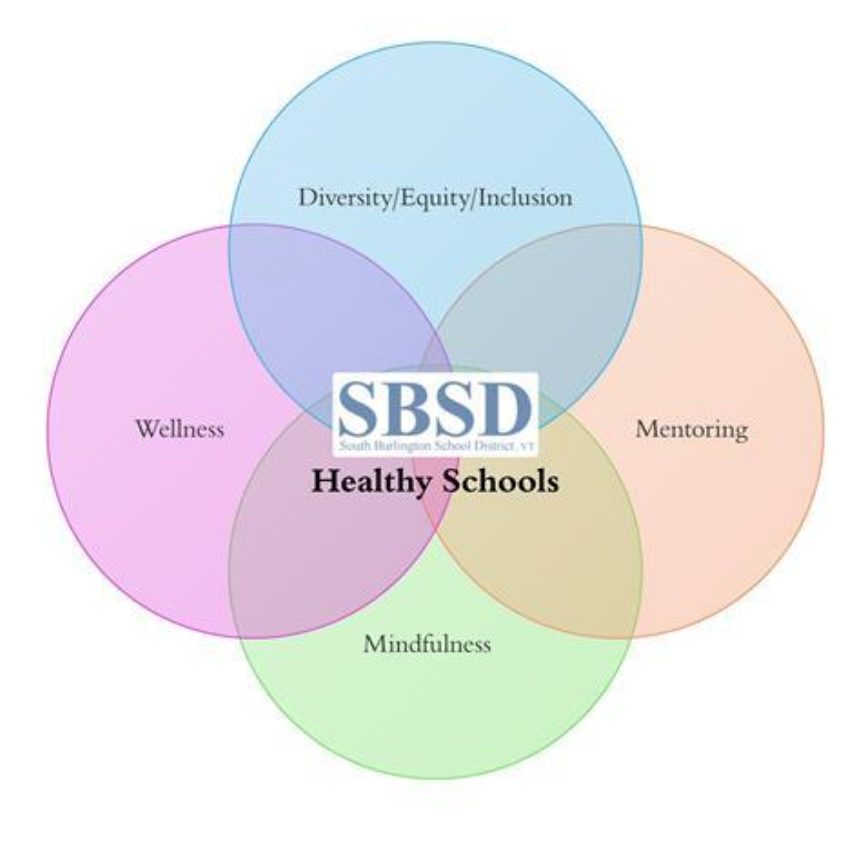
SBSD hired Susie Merrick as the first Healthy Schools Coordinator. She was very clear that Healthy Schools built on important legacies already in place.
“The creation of the Healthy Schools positions was certainly not the start of the equity work we are doing in South Burlington. When I was hired, I had the gift of hearing how dedicated many past and current staff were to social and racial equity, including our Superintendent David Young. I also witnessed first-hand colleagues doing courageous work alongside students that reflected their deep and genuine commitment to equity. But we still had a lot of work to do, like any place.”
A community conversation about equity
During the Healthy School’s first year of existence, conversations about race and identity took center stage due to broader forces in the community. The Student Diversity Union (now the Student Justice Union) at South Burlington High School, co-chaired by students Isaiah Hines and Madison Premsagar, led a movement to change the “Rebel” identifier.
Susie noted that every community has its own story. She recalled “Here in SB what really jump started conversations about race on a deeper level was our story connected to the Rebel identifier.
As staff, we became more aware of how racial inequity was harming our students — and they were the ones leading those discussions because they were courageous enough to speak up. I believe student voice pushed us as staff to more authentically address issues in our schools such as implicit bias and microaggressions.
Courageous Conversation for transformation
The fight over the Rebel moniker raged for over a year. In February, 2017, the School Board changed the name to “Wolves.” Principal Patrick Burke supported the name change unequivocally. He was quoted in an article by the student newspaper: “When I have kids of color saying, ‘I’m not comfortable with this,’ then I have to listen.”
During that school year, SBSD administrators and staff participated in training related to implicit bias facilitated by external providers. The Diversity, Equity, and Inclusion Committee (which had grown out of the team who attended the original We All Belong training) recognized the need to build internal capacity in order to create sustainability. SBSD secured grant funding to send a team of 10 staff members to the Courageous Conversation National Summit in Detroit in the fall.
The national summit was a transformative experience for the educators who attended. Susie identified the summit as a pivotal moment in her journey.
“As a white woman, I had never experienced training of this kind. Robin DiAngelo talks of ‘white women’s tears’ in her amazing book ‘White Fragility’: the idea that white people are so uncomfortable discussing race that we get defensive and/or experience guilt. My own white fragility showed up as tears throughout the conference.
The training helped me understand my reaction, try to address it with integrity and then work to build my skills and use my privilege to address issues of inequity in my professional and personal life. This has been an ongoing journey for me.
Other educators who went to Detroit had similarly transformative experiences. The question was how to bring that back home to the entire staff.
Bringing it home
The Diversity, Equity, and Inclusion Committee recognized that equity work, especially self work, first and foremost required a safe learning community. So during the 2017-18 school year the district allocated 90 minutes of each district-wide gathering (Convocation and two in-services) to relationship building. They called it “Coming Together”. The 400+ staff gathered in small groups and shared stories about things like family, life goals, and their hopes for the world.
In the following year, the district increased investment in this work and put in place several important structures:
- The Detroit group, who had continued meeting regularly, formally took on the design of professional learning related to equity and became the “Equity Planning Team”.
- The district brought in a Courageous Conversations trainer to offer the foundational Beyond Diversity course so that more educators could do deep self work. Nearly 60 educators volunteered to participate.
- The time allotted for equity work during the district inservices was doubled to three hours per session.
So now the district had substantial internal capacity to support the work. The inservices included time where educators presented in the auditorium. They talked about changes they were making in their practice to further equity, using the Teaching Tolerance Social Justice Standards to help guide their presentations. And then educators gathered in cross-district small groups, facilitated by Beyond Diversity trained staff, to process, deepen, and personalize the learning.
Agreements
To support authentic engagement in this intense work, SBSD adopted district-wide group norms. Rhiannon Kim, Speech Pathologist for SBSD and Adjunct Professor with UVM and Saint Michaels College teaching Mindfulness Based Practices, developed a set of agreements. She used an extensive process that included multiple rounds of trial and feedback from various stakeholders.
The agreements are relevant far beyond the inservice sessions. Staff across SBSD have used the agreements in a wide variety of settings. For instance, the agreements have supported collaborative team meetings, book discussion groups, the District Level Committee Meeting, and even classrooms.
In the future, funding will continue to be invested in building internal capacity. The district plans to continue offering the Beyond Diversity training to develop more facilitators for district-wide work.
The conversations will continue. And the impacts have already been far reaching.
Beyond conversations
The district level work in South Burlington has made a difference in practice..
For example, the two educators from Frederick H. Tuttle Middle School who were part of the original Detroit group have continued to deepen the work in their own classrooms and beyond.
Curriculum and student leadership
Christie Nold has developed powerful curriculum that addresses social identity and equity in her 6th grade social studies class. She has also worked with several colleagues to launch and facilitate a student leadership group called S.O.A.R. (Students Organized Against Racism).
This afternoon, SOAR was joined by @sbjusticeunion to hear more about the great work happening at the high school! #vted ❤️ pic.twitter.com/Y67bzvINSW
— Christie Nold (@ChristieNold) May 28, 2019
Christie reflected: “In many ways, I find the district level work we engage with sets conditions in the soil. It is not until the fruits of that labor begin to grow that we are able to identify the impact we’ve had on creating conditions. For me, the most beautiful fruit has been our Students Organizing Against Racism. This does not mean we have finished our work, but instead is an indication that we are feeding our soil well.”
Collaborative learning about Culturally Sustainable Pedagogy
The movement in VT
Consider the work of Lamoille South Supervisory Union (LSSU). During this last school year, Drs. Kathleen Brinegar & Hannah Miller, from Northern Vermont University, worked with all educators Pk-12 from LSSU. LSSU dedicated half of each of three in-services to this work.
Tracy Wrend, Superintendent of LSSU, saw the need for self work alongside the systemic.
We quickly discovered that the continuum of readiness to incorporate culturally sustaining practices and the range of emotional and experience with racial and social justice–particularly inequity–was hugely individual, personal and emotional. In order to support our students, we needed to take a step back and reflect on the ways our own experiences shape our views as educators, practice listening deeply to the voices of others, and ensure a safe, respectful adult culture where we can have uncomfortable conversations about our personal and systemic educational practices.”
Personal equity projects and district goals
Kathleen described the content: “The in-services focused on defining equity and understanding systemic and structural inequities based largely on the work of Gorski, Ladson-Billings, Django & Paris, the National Equity Project, and our own research. Educators throughout the district engaged in community circles focused on identifying inequities within the district and exploring their own bias.”
Educators engaged in self work and critical analysis of practices within the district. Based on their analysis, each educator developed a personal equity project. They worked with small accountability groups to help develop their projects and process together.
The year’s work ended with the development and unpacking of the following four goals for LSSU:
- Educators take proactive steps towards recognizing the ways they perpetuate and reproduce inequities.
- All learners have access to the supports, tools, and opportunities they need to grow.
- Youth and adults can safely construct their identities.
- Educational experiences are transformed by listening to the words, actions, and silences of youth.
The work with educators across the district will continue next school year. The district plans to add specific sessions for district administrators as well.
Self work and systemic change efforts are mutually reinforcing
The self work increasingly happening in districts and schools can complement professional learning focused on systemic equity.
For example, the theme of the Middle Grades Institute this year, is “Advancing Equity”. Rebecca Haslam from Seed the Way will facilitate an opening workshop. The workshop will lead each of the 150 participants through social identity exercises. Kathleen Brinegar will close the week long institute with a keynote about equity. Faculty will continuously ask participants to connect their efforts to fight systemic inequity with their self work.
Vermont educators will have ample opportunities for external professional learning about equity. For example:
- Based on requests from member districts, Champlain Valley Educator Development Center is offering the Courageous Conversation “Beyond Diversity” workshop twice this fall, plus an in-depth series for administrators.
- Rhiannon Kim is offering a week long strand at the BEST/MTSS conference called “Mitigating Bias in Our Schools and Uncovering Unconscious Bias.”
- Paul Gorski will likely be back next year to continue spreading the word about his Equity Literacy Framework, after offering multiple events organized by various prominent organizations last year.
- The Agency of Education developed an Equity Literacy Grant program and published a set of supportive Equity Literacy Resources.
District sponsored self work is a critical component of this broader equity movement. When time and funding is put into the self work, it sends a strong message about priorities. It also makes sure that all educators are involved instead of just those who seek it out on their own.
And those educators who do seek out additional learning about equity are better prepared on a personal level to understand and apply their learning.
Embrace the challenge
As the equity work becomes more personal, the challenge intensifies. Susie Merrick is quick to point out that the work in South Burlington School District is by no means perfect. It has been emotional and raw and nearly overwhelming for staff at times. She shared that “I am heavily steeped in both conviction and humility. Not a day goes by that I don’t wonder whether I’m the right person for the job.”
Yet, she has persevered and she has learned a lot along the way.
Tips for taking a personal approach to systemic equity
Susie offered three tips for school systems that want to do this work.
- “Make sure to give staff an opportunity to do the self work first. Talk to white staff about the fact that this is not the job of our staff of color to lead this work or to turn to in order to get answers to our questions. I would have named something different two years ago but to me that’s the most important. It’s been a game changer for us to have increased numbers of white staff do their own hard work.”
- “In South Burlington it’s been helpful to work toward allowing a critical mass of staff in all five schools to get the same equity training. I am so inspired by our staff developing a common language, becoming familiar with the Courageous Conversation protocol and sharing a set of guidelines for courageous dialogues. A growing number of our staff have even been using this learning in classrooms with their students.”
- “If you are an aspiring racial and social equity leader in your school community, really honor self care as you do this work and remember that change is hard and takes time. The work can be lonely, so be sure to find a group of colleagues with whom you can connect. Hold close the awareness that you are working toward allowing every single student in our schools to show up as their full selves. I want to make sure that I’m holding space for those reminders because not honoring them can impact well-being. There is an urgency to the work that doesn’t lend itself to pausing, but the pause is so important.”
Challenging ourselves so we can transform systems
“Embrace discomfort” is one of the Courageous Conversation agreements. This norm acknowledges the inherent challenge of self work. Confronting our implicit biases, our problematic beliefs, and our complicity with inequitable systems is hard. But it can be liberating. And it is oh so necessary so that we can transform ourselves, and then our systems, to give all students the opportunities they deserve.
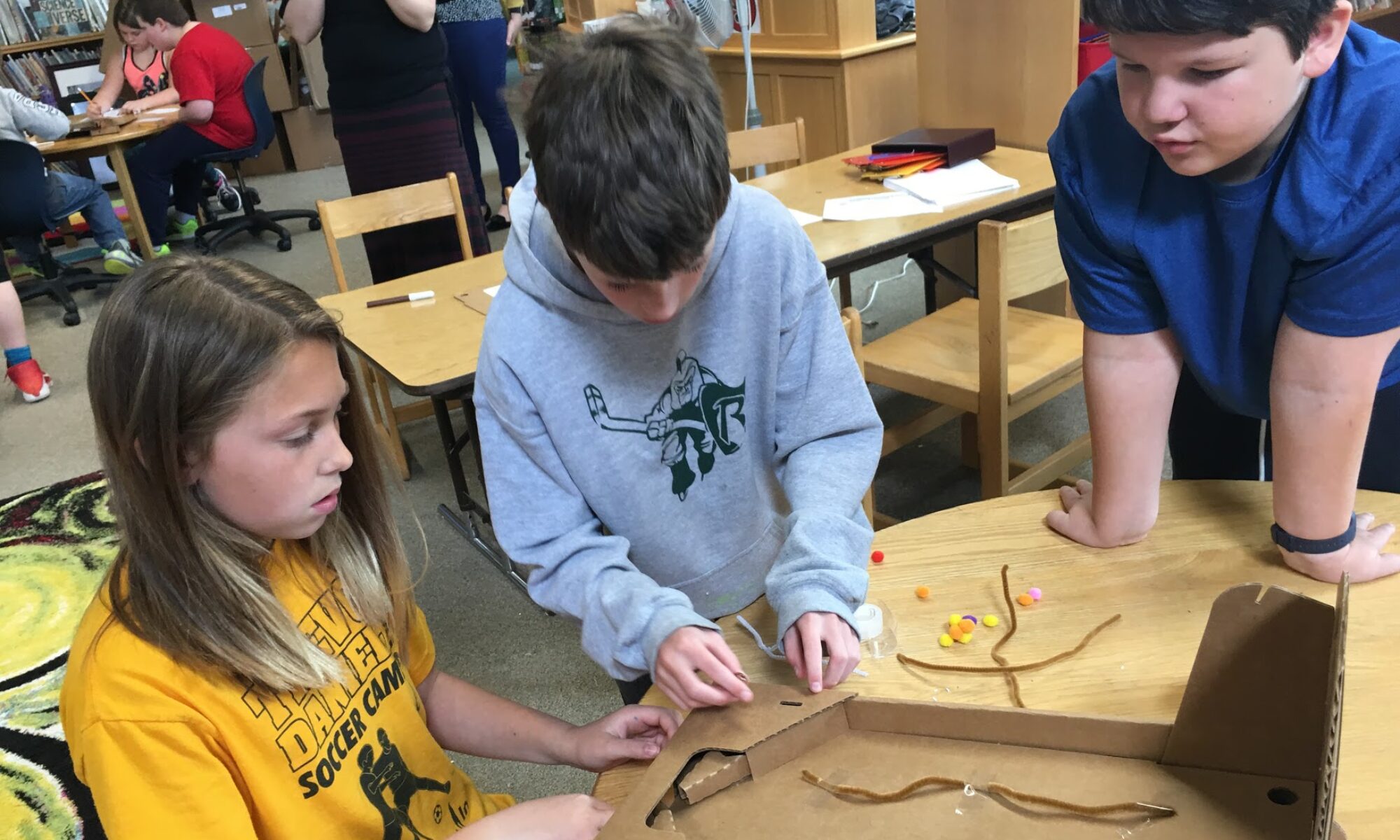

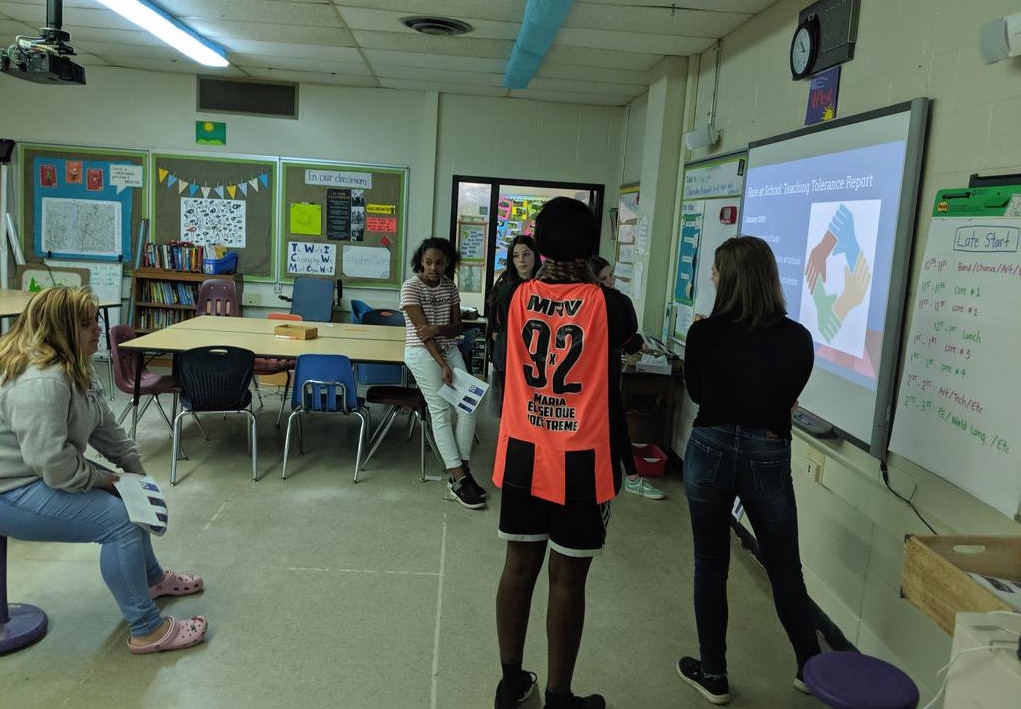
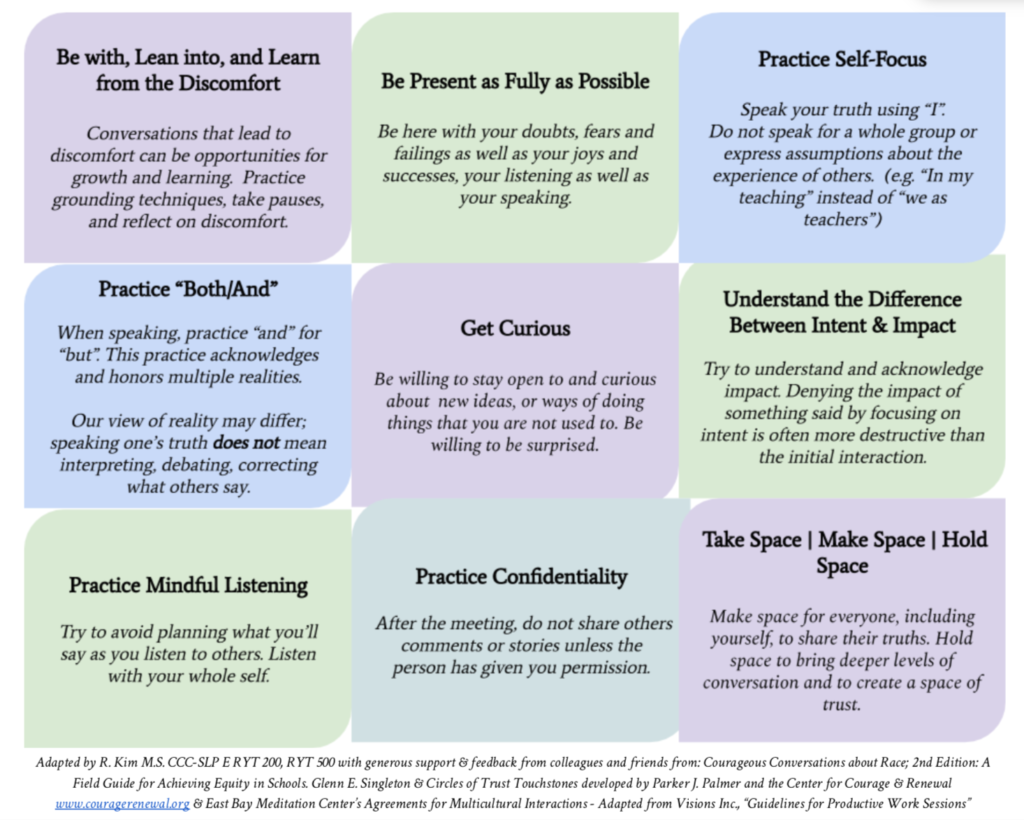
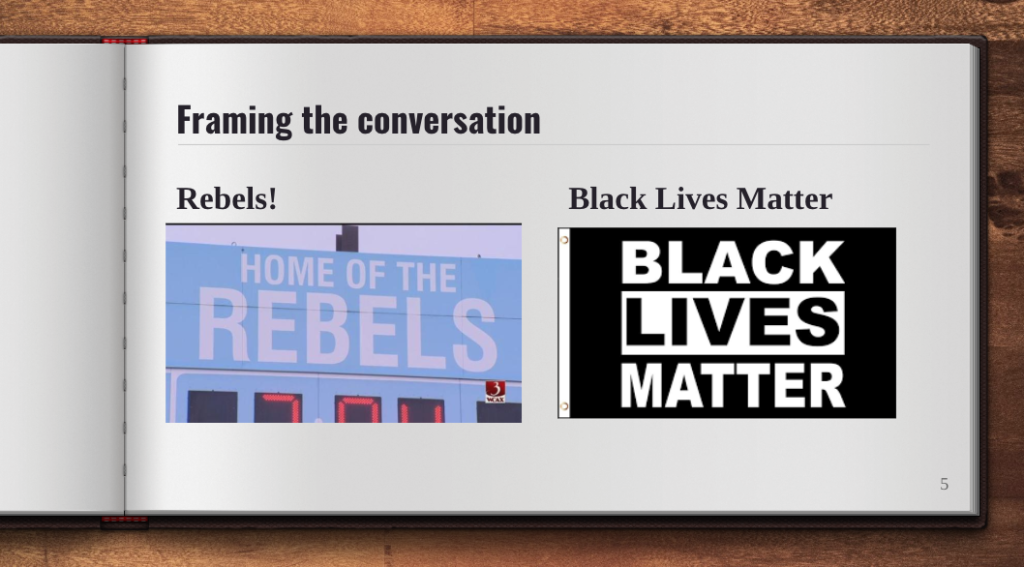
i think it is a good work to be done.
thanks for post.